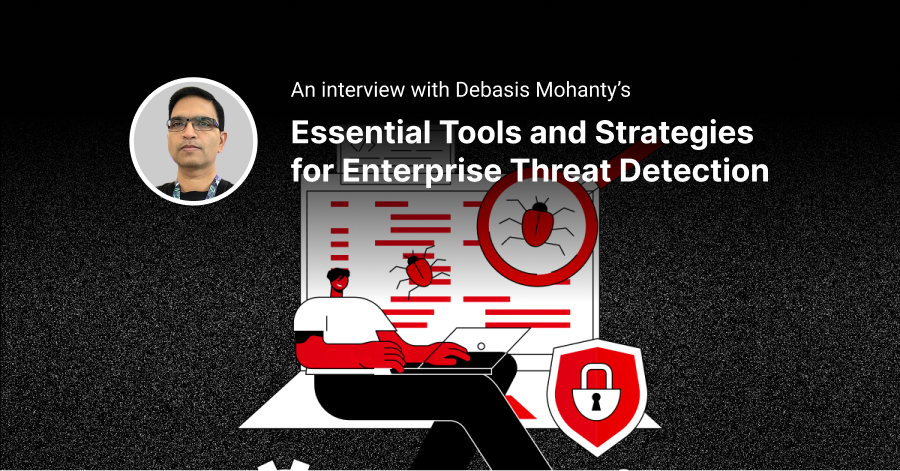Attack vector is a term you’ll encounter frequently in cybersecurity. While this may seem like an intimidating term, it simply refers to the method through which a hacker can try to access your information or computer systems – the tools they use to get there, so to speak. As you learn how to be more secure, knowing the different types of attack vectors will help you protect yourself from them and better understand potential threats in general. From DoS attacks to phishing scams and beyond, here are the main types of attack vectors to know about – and how to protect against them.
What is an Attack Vector?
An attack vector is the pathway that a hacker or adversary might use to get into your computer. Attack vectors are often pieces of malicious code, like viruses or key loggers, that steal information from you without your knowledge. A simple analogy would be to think of an attack vector as the path that a burglar takes to enter your home - through an open window, for example. Attack vectors commonly target vulnerabilities in computer systems and the security infrastructure that defends them, or use social engineering techniques to trick vulnerable users into giving away their passwords or other sensitive information.
Attack Vector vs Attack Surface
An attack surface is the totality of all the ways that a hacker can gain access to your computer. This includes everything from the software and hardware you use, to your browsing habits, to the passwords you use. Basically, it is the sum of vulnerabilities that exposes your system, network, or organization to attack. This includes everything from outdated software and systems to weak passwords and unsecured, easily accessible data. Attack surfaces can be of different types - physical, digital, and social engineering. They can be classified further based on exposure - internal and external or internet-facing. The wider the attack surface, the more likely it is that someone will be able to exploit it.
A hacker could attack your computer any number of ways, but the most common way is by breaching your attack surface – getting past the protections you put in place to protect yourself. Attack vectors are just one way that a hacker can reach your computer.
Why Do Attackers Exploit Attack Vectors?
Attack vectors are commonly exploited by attackers for a number of reasons. One reason is that they can easily breach your attack surface, which opens your system up to more attacks. Attack vectors can also be used to exploit known vulnerabilities in your software or systems, which can give the attacker access to your data or system, or spread malware in your system and network.
Finally, attackers often use attack vectors as part of their larger attack plan, knowing that they will eventually find a way in.
The most common motivation for attackers to use attack vectors is to gain access to your personal data, which can be used to gain access to your accounts and other information, and subsequently extort you for money.
How Do Attackers Exploit Attack Vectors?
To understand how attackers exploit attack vectors, it is important to understand the types of attack vectors that they use. In this section, we’ll look at the two main types of attack vectors - passive and active.
Types of Attack Vectors
Passive attack vector exploits involve attackers passively monitoring your environment to find weaknesses in your systems that can be exploited. The objective is to learn more about your company, your employees, and your entire infrastructure. Since they don’t modify your data or systems and resources, passive attack vectors are often difficult to detect. They’re also used for reconnaissance purposes for the same reason. Examples of passive attack vectors include: sniffing network traffic, scanning your email, capturing screenshots, eavesdropping, or using automated tools to gather information about your network.
Active attack vectors on the other hand, involve the attacker actively modifying your system and resources to gain access to your data. In this case, the attacker is actively trying to compromise your systems and resources and cause disruptions to your business that are likely to be noticed by your customers, employees, and other stakeholders. Some examples of active attack vectors include phishing, credential stuffing, unpatched security vulnerabilities, and malware.
However, regardless of their type, the basic steps to exploit an attack vector remain the same. Here’s a quick summary of the steps involved:
- Identifying a target system or network
- Learning about the target system or network and its weaknesses through reconnaissance
- Zeroing in on an attack vector that can be used to access the target system
- Designing tools to exploit the attack vector
- Breaking into the system and installing malware
- Browsing the target system and extracting data from it
Most Common Attack Vectors
It is no surprise that hackers have a plethora of attack vectors at their disposal. From the simplest to the most complex techniques, hackers have a multitude of ways to exploit any given system.
In this section, we’re covering some of the most common attack vectors that hackers use:
Phishing
In a
phishing
attack, the attacker attempts to trick an unsuspecting user into providing personal information via a fraudulent email, text message, or phone call. These fake messages can contain links to malicious websites that can be used to steal personal information or to take advantage of the user.
Unpatched Software and Vulnerabilities
Unpatched software can allow attackers to access and exploit security vulnerabilities that can be used to gain unauthorized access to your systems, launch bigger attacks, or manipulate your systems and data. In addition, new vulnerabilities are being discovered all the time that need to be patched before they are exploited.
Supply Chain Risks
Third and fourth-party vendors may introduce new vulnerabilities into your systems if they are not properly vetted or if they are not subject to the same security measures you have in place. This is particularly dangerous and is one of the top ways companies get breached because it leaves your data and systems open to attack.
Access Control Errors
Permissions and privileges that are not properly set up or are incorrectly granted can allow unauthorized users to access your data and systems.
Not Implementing Multi Factor Authentication
Multi-Factor Authentication ensures that only authorized users can access your systems. In the case that this security measure is not implemented, an attacker can use a stolen password to access your systems, particularly if you are working remotely.
Man-in-the-Middle Attacks
In a
man-in-the-middle attack
, the attacker intercepts and modifies the data that is being sent between you and the website you’re logged into. Also known as eavesdropping, these attacks are most common when you are using public wifi.
Trojans
A trojan horse is a malicious program that is disguised as a legitimate program and is used to infect your systems with malware. It usually spreads through email attachments or deceptive links.
Ransomware
Ransomware is a type of
malware
that encrypts your files and then destroys them unless you pay the ransom.
Ransomware
is a growing concern for businesses because it can be a costly and time consuming problem to fix.
DDoS Attacks
DDoS attacks are one of the most common and effective attack vectors used by cybercriminals to disrupt the operations of a targeted network. They are typically used to make a network unavailable to its users by flooding it with traffic.
Unsecured Remote Services
Since the shift to remote work, cyber attackers are increasingly targeting remote systems and services to gain access to valuable data.
Unprotected Cloud Services
Misconfigured cloud services are a common target for hackers and can be used to steal sensitive data and launch malicious attacks.
Poor Endpoint Detection and Response
With the dramatic increase in the number of endpoints in the enterprise, they have become easy targets for attackers. Cyber attackers circumvent poor security controls using obscure techniques and tools to access your endpoint devices.
Combat Attack Vectors with Evolve
Today's threat landscape is constantly changing, and attackers are continuously evolving their methods. They are always on the lookout to exploit new vulnerabilities and take advantage of new opportunities. This makes it difficult for security teams to keep up with the latest attack vectors and defend their organizations.
With Evolve Security Automation, you can quickly adapt to the ever-changing landscape of cyber threats. The
Evolve platform
combines best-of-breed security products and services to protect your organization against today's sophisticated cyber attacks. Moreover, Evolve's advanced analytics, actionable threat intelligence, and automation capabilities help you stay ahead of the curve by automating the detection and response to new and emerging threats.
Conclusion
In conclusion, knowing the different types of attack vectors is the first step in being able to protect yourself from them. By understanding the different ways that hackers can exploit your system, you can better protect yourself from potential threats. Schedule a free demo today to learn more about Evolve and how it can help protect your organization from the latest attack vectors.






